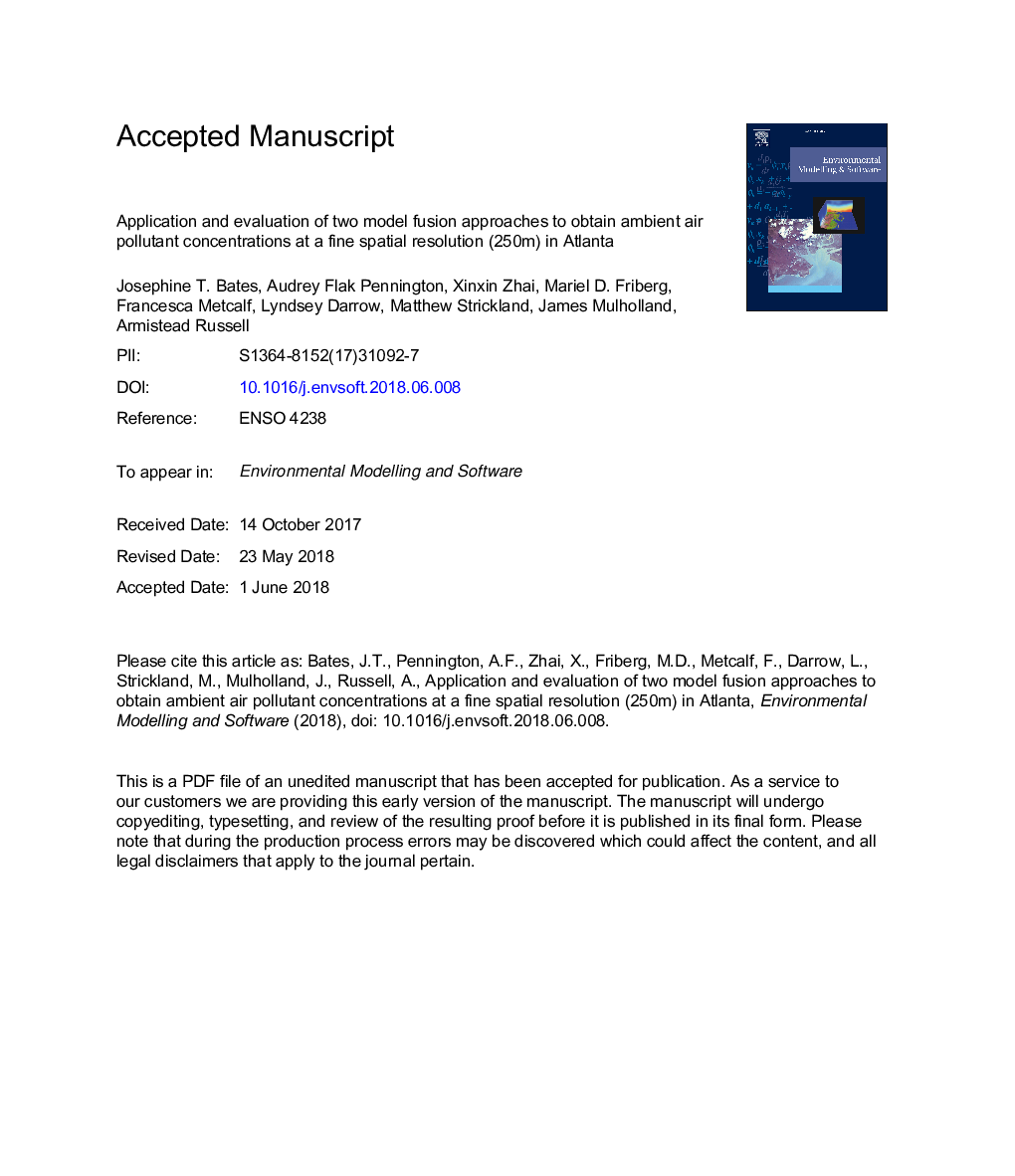| Article ID | Journal | Published Year | Pages | File Type |
|---|---|---|---|---|
| 10133054 | Environmental Modelling & Software | 2018 | 34 Pages |
Abstract
Epidemiologic studies rely on accurately characterizing spatiotemporal variation in air pollutant concentrations. This work presents two model fusion approaches that use publicly available chemical transport simulations, dispersion model simulations, and observations to estimate air pollutant concentrations at a neighborhood-level spatial resolution while incorporating comprehensive chemistry and emissions sources. The first method is additive and the alternative method is multiplicative. These approaches are applied to Atlanta, GA at a 250â¯m grid resolution to obtain daily 24-hr averaged PM2.5 and 1-hr max CO and NOx concentrations during the years 2003-2008 for use in health studies. The modeled concentrations provide comprehensive estimates with steep spatial gradients near roadways, secondary formation and loss, and effects of regional sources that can influence daily variation in ambient pollutant concentrations. Results show high temporal and spatial correlation and low biases across monitors, providing accurate pollutant concentration estimates for epidemiologic analyses.
Related Topics
Physical Sciences and Engineering
Computer Science
Software
Authors
Josephine T. Bates, Audrey Flak Pennington, Xinxin Zhai, Mariel D. Friberg, Francesca Metcalf, Lyndsey Darrow, Matthew Strickland, James Mulholland, Armistead Russell,
